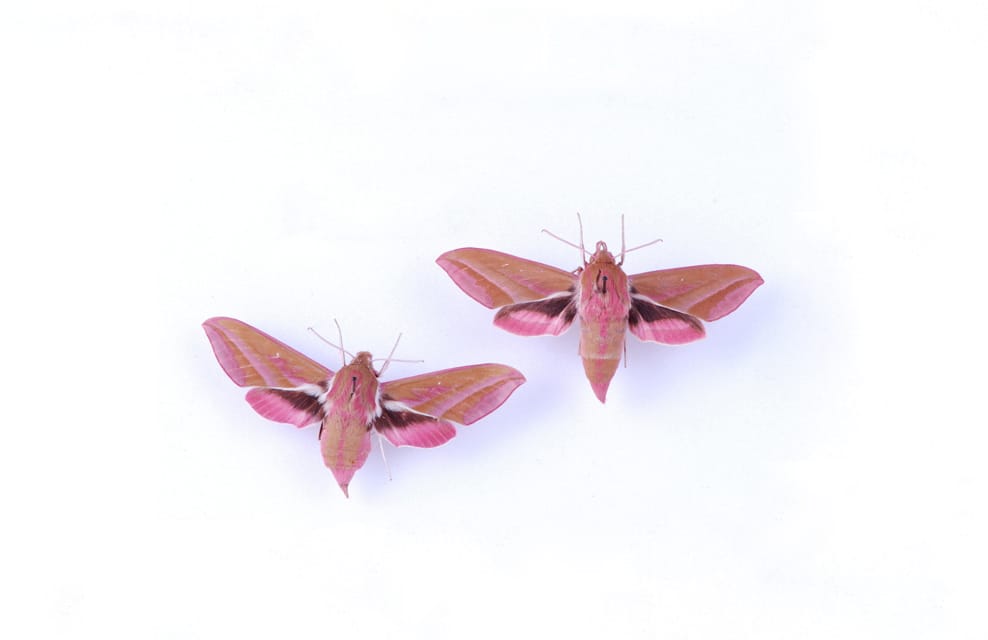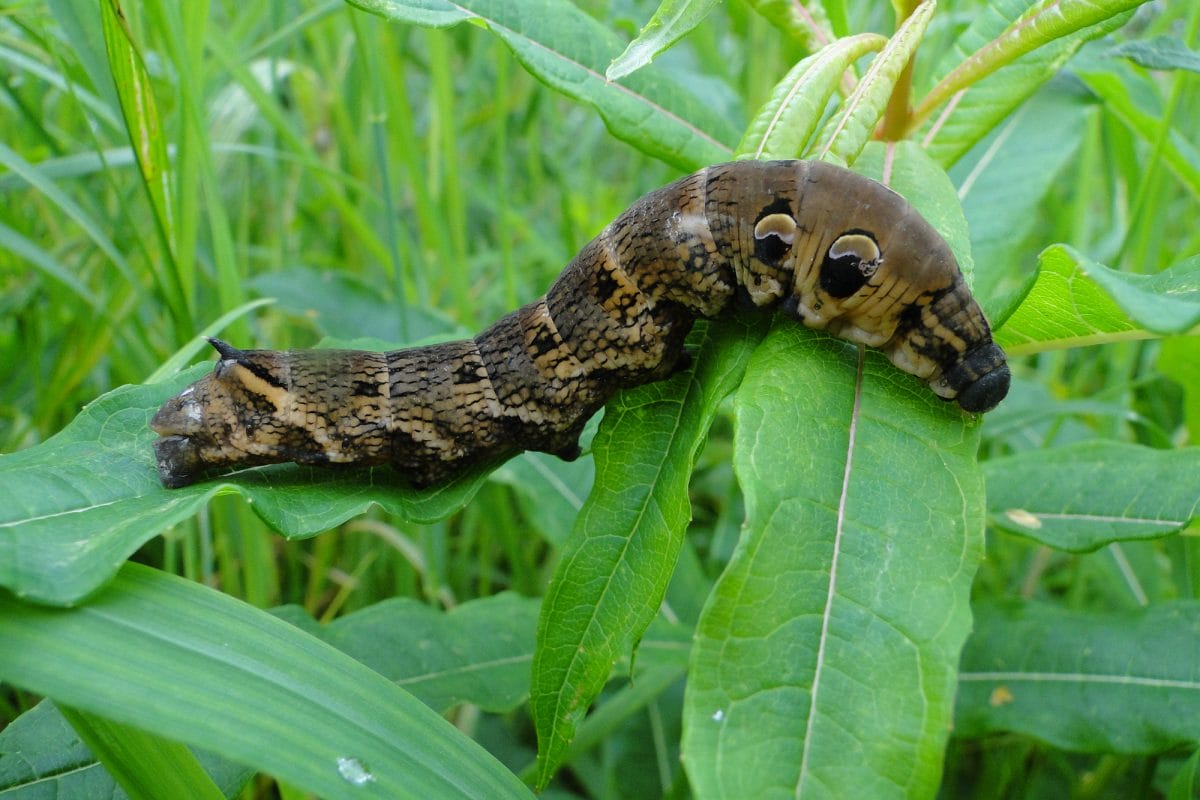My name is May and I have just graduated from University where I studied Biology. I have been volunteering at the Horniman for just over a year and insects are my passion!
I have been fortunate to work on the insect collection alongside the Horniman’s Keeper of Natural History, Jo Hatton. My main task as a volunteer is capturing data about the collections. I ensure each specimen has been electronically recorded with its own unique identification number, and make sure this is associated with all of that specimen’s data including the date the specimen was collected, the species name and its locality.
Fact File: Elephant Hawkmoth (Deilephila elpenor)
Did you know? The Elephant Hawkmoth gets its name from its caterpillar’s resemblance to an elephant’s trunk. These caterpillars have four eye-spots which startle and warn off predators. The adult moths are more vibrantly coloured, though the specimens shown here have faded slightly with age.


Fact File: Privet Hawkmoth (Sphinx ligustri)
Did you know? The Privet Hawk moth is the largest Hawkmoth found in the UK with a wingspan of up to 12cm. As caterpillars, they feed on Privet bushes and it this foodplant gives the species its name.

As a keen entomologist (someone who studies insects), I feel that the beauty of moths often goes unnoticed, probably due to the fact that most species are nocturnal, which can make them harder for us to spot. The occasional drab species that finds its way into the bathroom is often the only time we get to encounter moths up close.
But not all moths are brown, despite what many people think! There are over 2,500 species of moth in the UK.
My favourites belong to the family Sphingidae, commonly known as the Hawkmoths. These moths have earned their name through their fast, powerful flight and incredible night vision. The two specimens above are examples of Hawkmoths found within the UK. Both species share a vibrant pink colouration which is rarely seen in moths. This allows them to be easily identified.
I’ve been lucky enough to see some of these remarkable moths first-hand, through my moth trap. I received a moth trap for my 13th birthday and it is the best present I have ever gotten to this day.
A moth trap is a closed square box with a mercury light bulb that emits a very bright light. The inside of the trap is lined with empty egg boxes for the moths to settle on. Attracted by the light, moths fly in through a small gap in the centre of the trap, but are often unable to find their way out again. Instead, they settle on the egg boxes for the rest of the night. When you check the trap in the morning, you can then see all the moths resting among the egg boxes and then release them once they’ve been identified and counted.
I remember the first time I caught a Privet Hawk-moth in my moth trap. I was completely taken by their beauty, and fascinated by their almost fluorescent pink colour. I could see my neighbour peering over the garden fence trying to work out what I was looking at. I took the moth over to her and she gasped and exclaimed, “It’s almost as big as your hand! I didn’t know moths could be so bright! It is beautiful.”
We both watched as the moth flew away, perfectly demonstrating its powerful flight and resembling a hawk in the sky. I was so pleased to have had the opportunity to show someone how beautiful moths can be and to convert her perceptions of moths being dull!
If you want to learn more about these fascinating insects head to the UK moths website to explore the diversity of moths that you can find in your own backyard!
Share your moth pictures with us using the hashtag #horniman on Instagram and Twitter.


